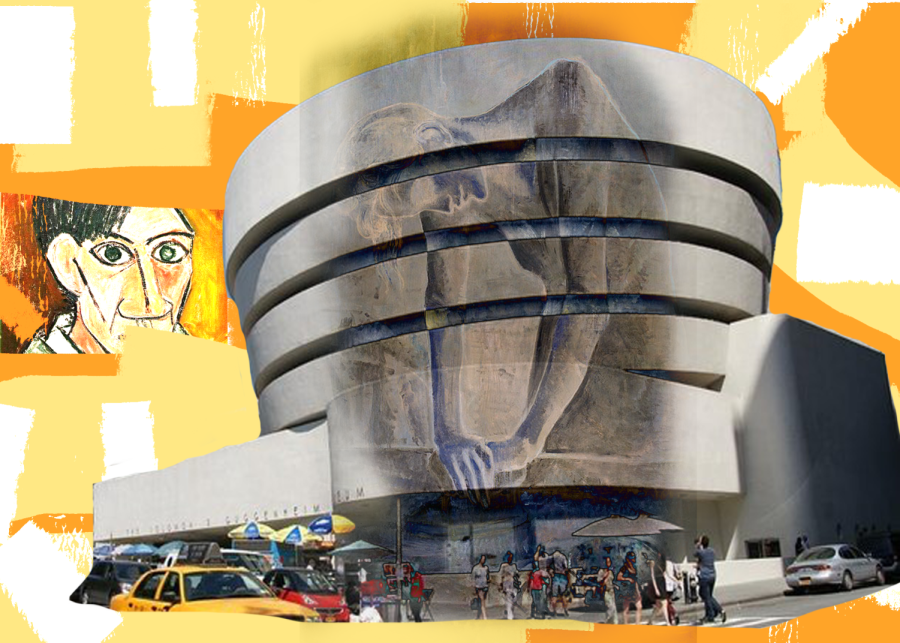Guggenheim Art Lawsuit Raises Questions About Property Ethics
The Guggenheim Museum has recently become the target of a lawsuit claiming that the museum is not the rightful owner of the Pablo Picasso painting “Woman Ironing.” The plaintiffs filing the lawsuit are descendents of Karl Adler, who sold the painting to an art collector in 1938 for approximately $1,552 (now about $30,000), well under its true value which is estimated to be around $100 and $200 million, to raise funds to escape Nazi Germany. The lawsuit claims that the sale was invalid due to it being sold under duress.
The fact that a sale took place complicates the lawsuit. Eli Gunderman, a third-year business analytics major and member of the Jewish Student Union, thinks that a sale taking place is enough reason for the Guggenheim to keep the painting.
“Having a discounted price is unethical, but not enough of an issue to have [the painting] change hands 80 years later,” Gunderman said.
The Guggenheim says they reached out to Adler’s son, Eric Adler, in the ‘70s when they came into possession of the painting. Instructor of Art History and Docent at the Seattle Art Museum (SAM) Monica Bowen says that the concept of restitution, or giving property back to their rightful owners, has become a hot topic in the art community.
Recently, museums like the Smithsonian have started to return some of these pieces, which shows the public that it is possible to secure the return of artifacts obtained by museums under ethically ambiguous circumstances.
“I think we’re going to continually see [these cases] in the future,” Bowen said. “There’s a heightened awareness of ethics and the position of power museums have in representing objects from other cultures.”
In Seattle, the SAM has a history of owning stolen art. In the late ‘90s, the museum was sued by heirs of Paul Rosenberg, who were trying to recover the Henri Matisse painting “Odalisque,” which was stolen by the Nazis during World War II. After investigating the provenance of the painting and confirming that it was indeed stolen, the SAM returned the painting to Rosenberg’s heirs. According to Bowen, the SAM had no idea it was stolen because the painting was gifted to them by trusted art collectors.
“I think that research needs to be involved. Not only tracking the sale but the origin of the object,” Bowen said. “Museums need to dedicate more of their resources [to that].”
Arielle Simmons, the curator for the Hedreen and Vachon galleries at Seattle University, agrees with this sentiment. She believes that as an art curator it is her job to understand the history and story of the pieces she puts on display in the galleries.
“To curate means to care…and I try to take that really seriously in my role as curator,” Simmons said. “There is that concern of making sure I have a good understanding of where the work has come from and what the story of that work is.”
Bowen pointed out that what museums choose to put on display can be a reflection of that institution’s values, or of what values they want to teach the public. This is why she believes museums should return their stolen art and acknowledge people who have been oppressed or wronged. Gunderman echoed similar sentiments.
“It’s part of the Jewish story. The paintings [are not] the only things they took from us,” Gunderman said. “If a museum has a piece that has been stolen, they have no right to keep it.”
Going forward, Bowen believes that one way ethical art practices will develop is by educators teaching about stolen art and restitution. Bowen herself spends a whole day in her ancient art history class teaching about the subject, specifically about the Parthenon sculptures in the British Museum’s collection.
“My hope is that in training people, if they’re art history majors and go on to work in a museum, they’ll be aware of these situations and be able to ensure that ethical practices take place,” Bowen said.
While the specific legal battle in which the Adler heirs are engaged could have any outcome, it seems clear that the broader movement toward the return of dubiously acquired property will continue to gain traction.


